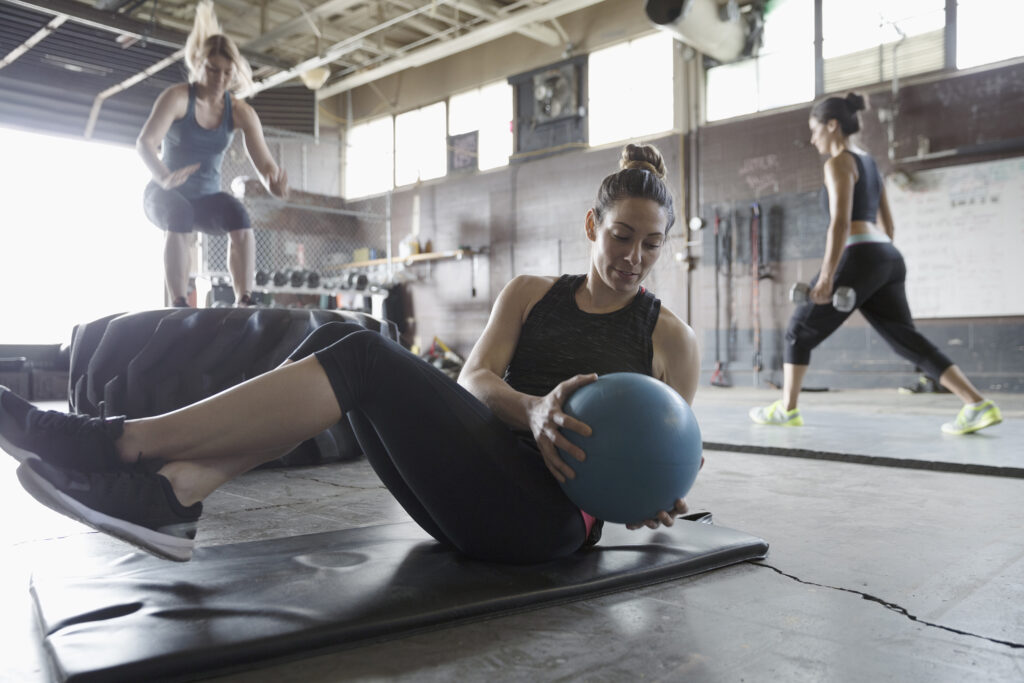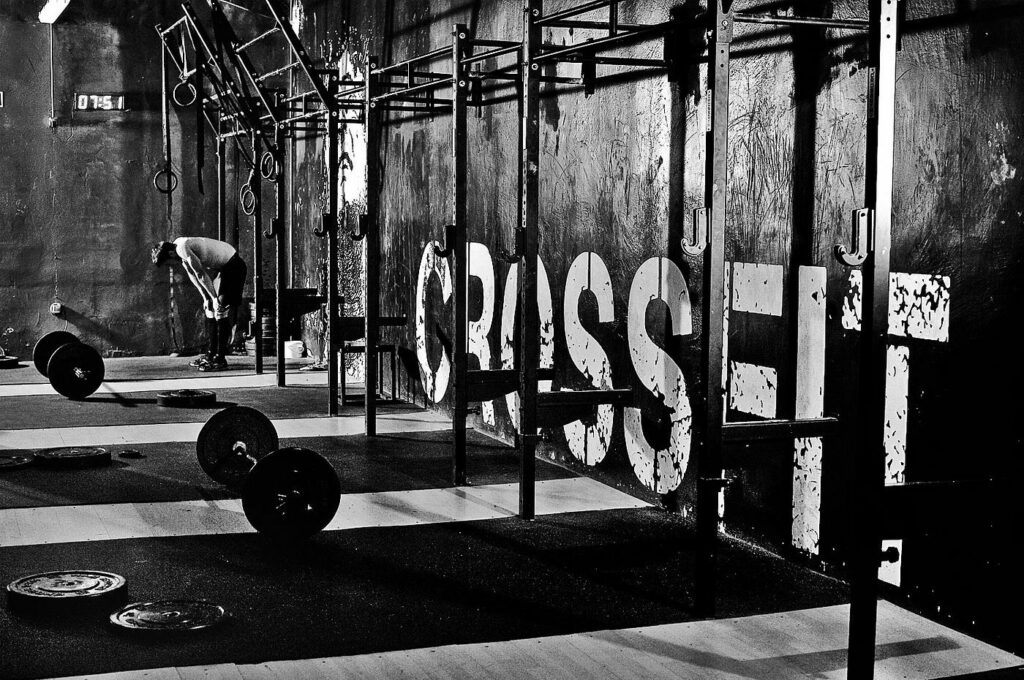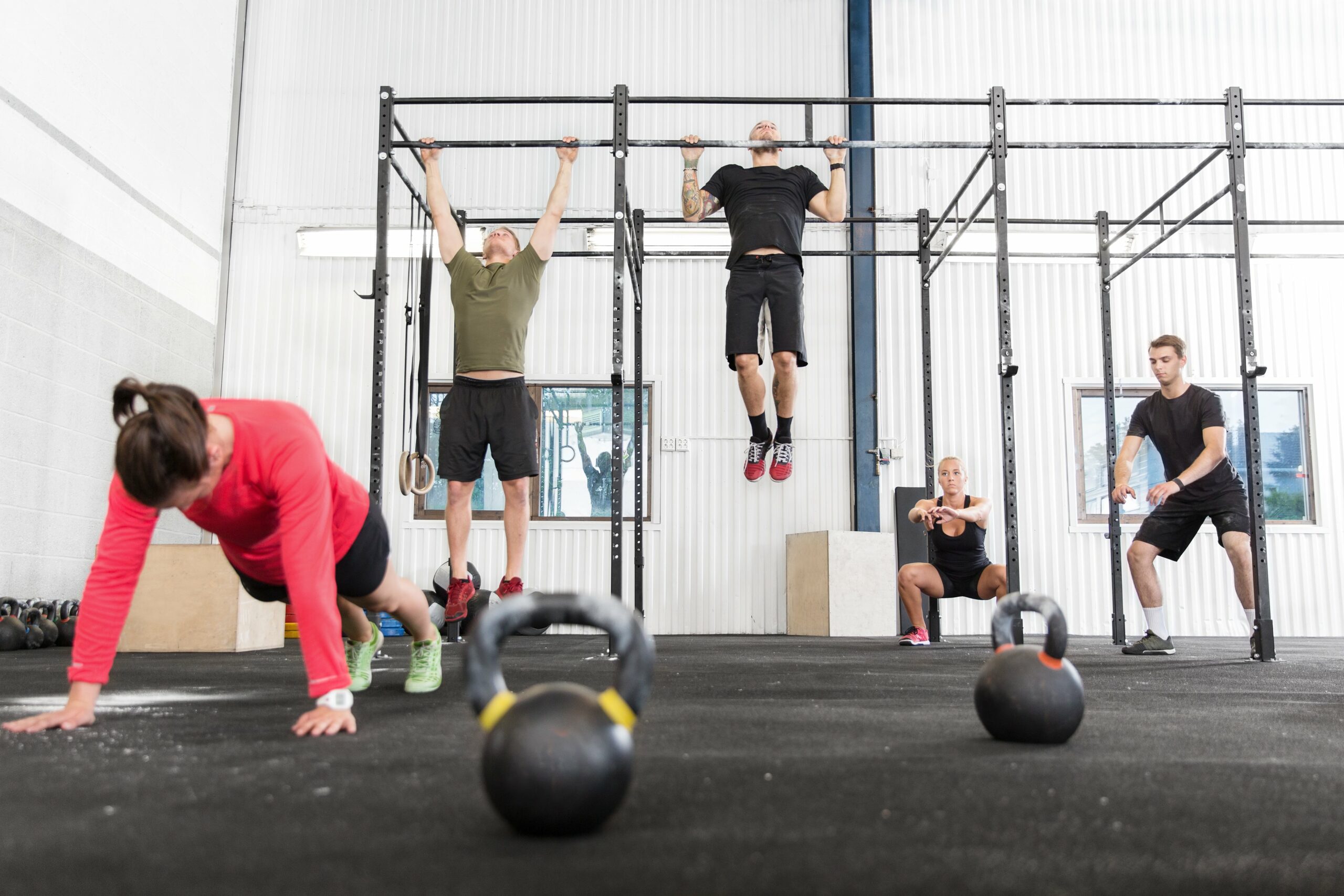CrossFit training has gained immense popularity in recent years as a comprehensive fitness program that combines elements of weightlifting, cardio, and functional movements. It is designed to improve strength, endurance, flexibility, and overall fitness levels. If you’re new to CrossFit and looking to start your journey, this beginner’s guide will provide you with essential information to get started and make progress in a safe and effective manner.
What is CrossFit?

CrossFit is a high-intensity fitness program that combines elements of weightlifting, cardiovascular conditioning, and functional movements. It is a comprehensive approach to fitness that focuses on improving overall strength, endurance, flexibility, and power. Unlike traditional workouts that isolate muscle groups, CrossFit aims to train the body as a whole, emphasizing functional movements that mimic real-life activities.
CrossFit workouts are constantly varied, meaning no two workouts are the same. They incorporate a wide range of exercises from various disciplines, including weightlifting, gymnastics, cardio, and bodyweight movements. This variety not only keeps workouts exciting but also challenges individuals to continually adapt and improve.
CrossFit promotes intensity, pushing individuals out of their comfort zones to achieve maximum effort. Workouts are designed to be performed at high intensity, meaning participants are encouraged to give their all and push their limits. This intensity leads to increased cardiovascular fitness, improved strength, and enhanced overall athletic performance.
What are the Benefits of Crossfit?
CrossFit training offers numerous benefits that make it a popular and effective fitness program.
1. CrossFit improves overall strength and muscle tone by incorporating weightlifting and resistance exercises. The program focuses on functional movements, helping individuals become stronger and more capable in their daily activities.
2. CrossFit enhances cardiovascular endurance through high-intensity workouts that include elements of cardio and interval training. This leads to improved stamina and increased energy levels.
3. CrossFit promotes flexibility and mobility. The dynamic movements and stretches performed during workouts help improve range of motion and joint mobility, reducing the risk of injuries.
4. CrossFit fosters a supportive community environment, creating a sense of camaraderie and accountability. The group atmosphere and friendly competition motivate participants to push themselves harder and achieve their fitness goals.
5. CrossFit is time-efficient. The workouts are typically intense and concise, allowing individuals to maximize their results in a shorter period. This makes it an ideal choice for those with busy schedules.
Overall, CrossFit offers a well-rounded approach to fitness, delivering improvements in strength, cardiovascular endurance, flexibility, and community support, making it a rewarding and effective training method for individuals of all fitness levels.
Finding the Right CrossFit Gym: Factors to Consider

Finding the right CrossFit gym, also known as a “box,” is crucial for a successful CrossFit training experience. Here are some factors to consider when choosing a CrossFit gym:
1. Location: Look for a gym that is conveniently located, making it easier for you to attend classes regularly.
2. Reputation and Reviews: Research the reputation of the gym by reading online reviews and testimonials from current and past members. Positive feedback is a good indication of a well-established and reputable facility.
3. Qualified Coaches: Ensure that the gym has certified CrossFit trainers who are knowledgeable and experienced. They should be able to guide you safely through workouts and provide proper technique instruction.
4. Facilities and Equipment: Visit the gym to check the condition and variety of equipment available. The gym should have all the necessary equipment for CrossFit training, including barbells, kettlebells, pull-up bars, and rowing machines.
5. Class Size and Schedule: Consider the class size and schedule to ensure that it fits your preferences and availability. Smaller class sizes allow for more individual attention and coaching.
6. Community and Atmosphere: A welcoming and supportive community can greatly enhance your CrossFit experience. Look for a gym that fosters a positive and inclusive environment where members support and motivate each other.
7. Trial Classes or Introductory Programs: Many CrossFit gyms offer trial classes or introductory programs for beginners. Take advantage of these opportunities to assess if the gym and coaching style align with your goals and preferences.
8. Safety Protocols: Inquire about the gym’s safety protocols and measures taken to prevent injuries during workouts. Coaches should emphasize proper form, technique, and gradual progression.
By considering these factors, you can find a CrossFit gym that aligns with your goals, provides a safe and supportive environment, and enhances your overall CrossFit training experience.
Foundations and Fundamentals of CrossFit
1. Introductory Programs: Look for CrossFit gyms that offer introductory programs or foundations classes specifically designed for beginners. These programs provide instruction on proper form, technique, and basic movements.
2. Movement Mastery: Emphasize learning and mastering fundamental movements such as squats, deadlifts, presses, and pulls. These functional movements form the basis for more complex exercises in CrossFit.
3. Technique Over Intensity: Prioritize proper technique and form before adding intensity or heavy weights. This helps prevent injuries and ensures optimal performance.
4. Scaling and Progression: CrossFit is scalable, meaning workouts can be modified to suit individual fitness levels. Coaches should provide scaling options and gradually increase the challenge as you progress.
5. Consistency and Practice: Regularly attend classes and practice the fundamental movements to build muscle memory and improve proficiency.
6. Personalized Coaching: Seek out coaches who provide individual attention and guidance, correcting form and offering modifications to cater to your specific needs.
7. Patience and Progression: CrossFit is a journey, and progress takes time. Focus on steady improvement and avoid rushing into advanced movements before mastering the basics.
By focusing on the foundations and fundamentals of CrossFit, you will develop a solid base of movement skills, reduce the risk of injury, and set yourself up for long-term success in your fitness journey.
Essential CrossFit Exercises and Movements

CrossFit training incorporates a wide range of movements and exercises to improve overall fitness and functional performance. Here are some essential CrossFit movements and exercises to familiarize yourself with:
1. Olympic Weightlifting: CrossFit incorporates Olympic weightlifting movements such as the snatch and clean and jerk. These exercises focus on explosive power, coordination, and full-body strength.
2. Gymnastics Movements: CrossFit includes various bodyweight movements like pull-ups, push-ups, handstand push-ups, and muscle-ups. These exercises improve upper body strength, core stability, and body control.
3. Cardiovascular Exercises: CrossFit utilizes cardiovascular activities like running, rowing, cycling, and jump rope. These exercises improve endurance, stamina, and cardiovascular fitness.
4. Kettlebell Training: Kettlebell swings, snatches, and Turkish get-ups are common in CrossFit. Kettlebell exercises improve strength, coordination, and functional movement patterns.
5. Plyometric Exercises: Box jumps, burpees, and squat jumps are examples of plyometric exercises in CrossFit. These movements enhance explosive power, agility, and coordination.
6. Functional Movements: CrossFit incorporates functional movements like squats, deadlifts, lunges, and overhead presses. These exercises improve overall strength, mobility, and stability for everyday activities.
7. Core Exercises: CrossFit includes core-strengthening exercises like planks, sit-ups, and toes-to-bar. These movements enhance core stability and help in transferring power between the upper and lower body.
8. Skill-Based Movements: CrossFit challenges individuals with skill-based movements like double-unders (jumping rope with two rotations per jump) and handstand holds. These exercises improve coordination, balance, and body awareness.
Understanding and mastering these essential CrossFit exercises and movements will allow you to participate fully in CrossFit workouts, improve strength and endurance, and progress in your fitness journey. As always, it’s important to start with proper form and technique, gradually increase the intensity, and listen to your body to prevent injuries and achieve optimal results.
CrossFit Classes and Workouts
CrossFit classes and workouts are structured to challenge participants both physically and mentally. Here are key points to understand about CrossFit classes and the workout structure:
1. Warm-up: Classes typically begin with a warm-up session to prepare the body for the upcoming workout. Warm-ups may include dynamic stretches, mobility exercises, and light cardio activities.
2. Skill or Strength Training: Following the warm-up, classes often focus on skill development or strength training. This portion of the class allows participants to practice and improve specific movements or lifts with guidance from coaches.
3. Workout of the Day (WOD): The WOD is the heart of CrossFit classes. It consists of a combination of movements performed at high intensity and varies from day to day. WODs may include time-based challenges, AMRAPs (as many rounds as possible), or EMOMs (every minute on the minute).
4. Scalability and Modifications: CrossFit workouts can be scaled or modified to accommodate individuals of different fitness levels and abilities. Coaches provide options to adjust weights, repetitions, or movements to ensure everyone can participate and make progress safely.
5. Functional Movements: CrossFit workouts emphasize functional movements that mimic real-life activities. This includes exercises like squats, deadlifts, push-ups, and pull-ups, which improve overall strength and agility.
6. Intensity and Time Domains: CrossFit workouts are designed to be intense and challenging. They can range from short, high-intensity workouts lasting a few minutes to longer endurance-based workouts that may take 20 minutes or more to complete.
7. Community and Support: CrossFit classes foster a supportive and encouraging community atmosphere. Participants often cheer each other on and celebrate accomplishments, creating a sense of camaraderie and motivation.
8. Coaching and Feedback: Coaches play a vital role in CrossFit classes, providing guidance on technique, offering feedback, and ensuring safety during workouts. They help participants maintain proper form, intensity, and motivation.
CrossFit classes and workouts offer a dynamic and constantly varied fitness experience. They challenge individuals to push their limits, improve strength and endurance, and achieve their fitness goals in a supportive and community-driven environment. Remember to listen to your body, scale movements as needed, and communicate with coaches to ensure a safe and effective workout.
Safety Considerations in CrossFit Training
Safety is a top priority in CrossFit training. Here are important considerations to ensure a safe workout experience:
- Proper Technique: Focus on learning and practicing proper form and technique for each movement. This reduces the risk of injury and maximizes the effectiveness of the exercise.
- Gradual Progression: Gradually increase the intensity, weight, or complexity of movements as you build strength and proficiency. Avoid rushing into advanced exercises before mastering the basics.
- Warm-up and Cool-down: Prioritize warming up with dynamic stretches and mobility exercises to prepare the body for the workout. Cool down with static stretches and gentle movements to aid in recovery.
- Listen to Your Body: Pay attention to how your body feels during workouts. If you experience pain or discomfort, modify or scale the movement, or consult with a coach.
- Hydration and Nutrition: Stay hydrated before, during, and after workouts. Maintain proper nutrition to support your body’s energy needs and recovery.
- Rest and Recovery: Allow sufficient time for rest and recovery between workouts. This helps prevent overtraining and reduces the risk of injuries.
- Open Communication: Communicate any pre-existing injuries or limitations to your coach, so they can provide appropriate modifications and guidance.
Conclusion
In conclusion, CrossFit training offers an exciting and challenging fitness journey for beginners seeking a comprehensive workout program. By understanding the fundamentals, finding the right gym, focusing on proper technique, and prioritizing safety and progression, newcomers can embark on a successful CrossFit journey. The diverse range of workouts, supportive community, and emphasis on functional movements contribute to improved strength, endurance, flexibility, and overall fitness levels. It is crucial to listen to your body, scale movements when necessary, and prioritize rest and recovery. CrossFit training provides an opportunity to push boundaries, set goals, and achieve remarkable transformations.


